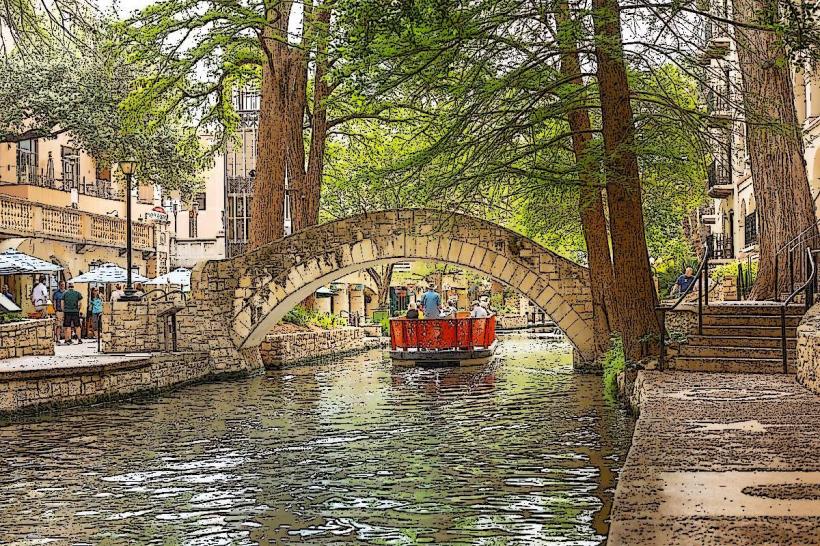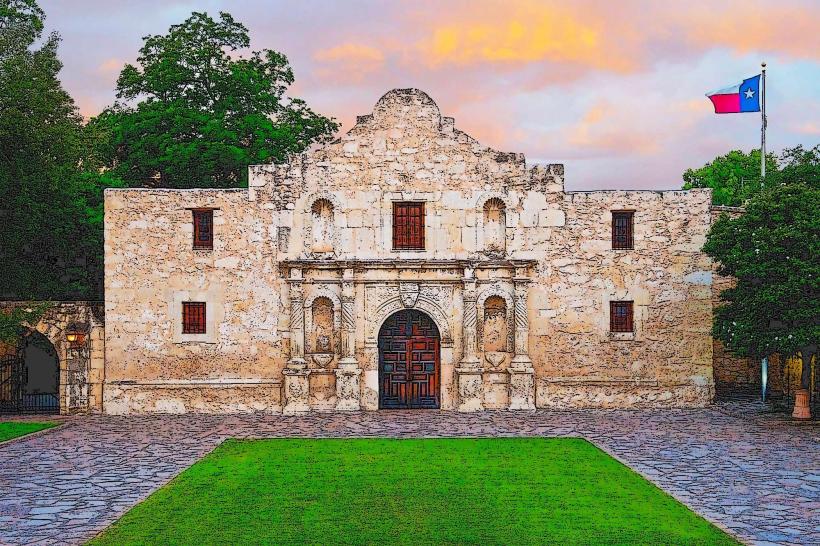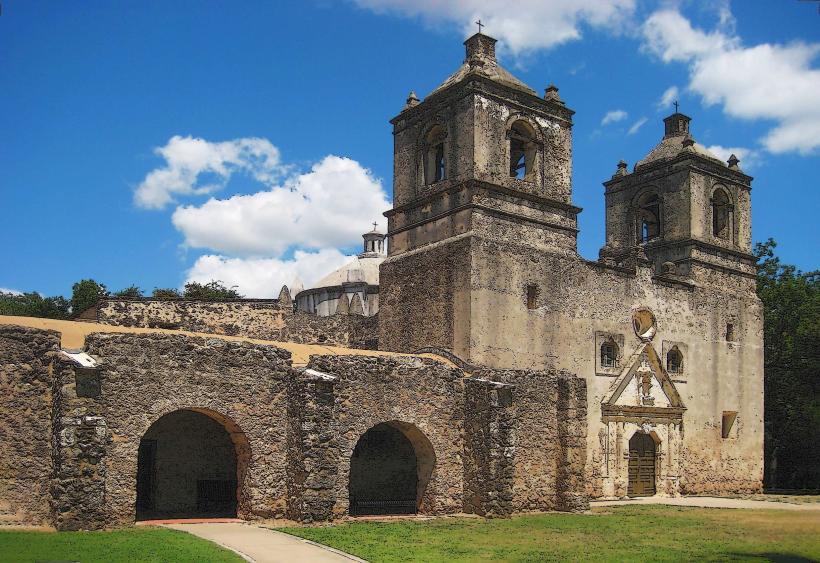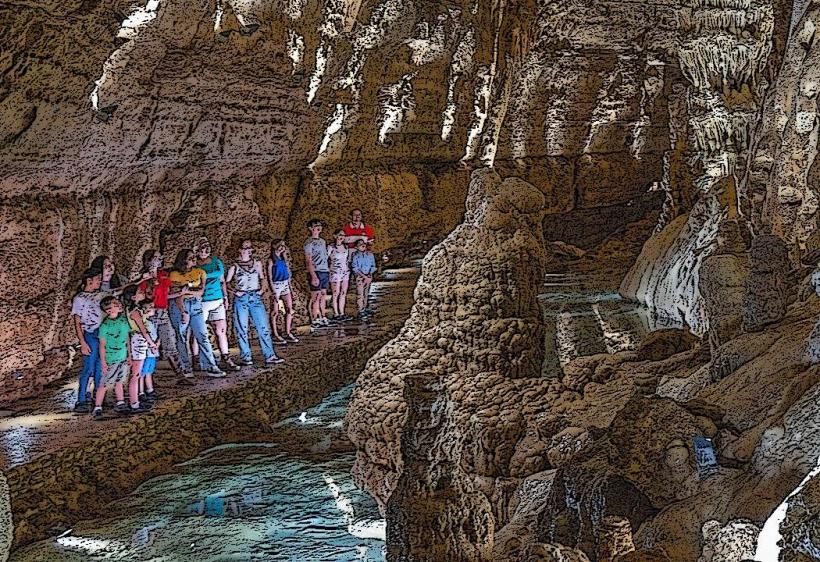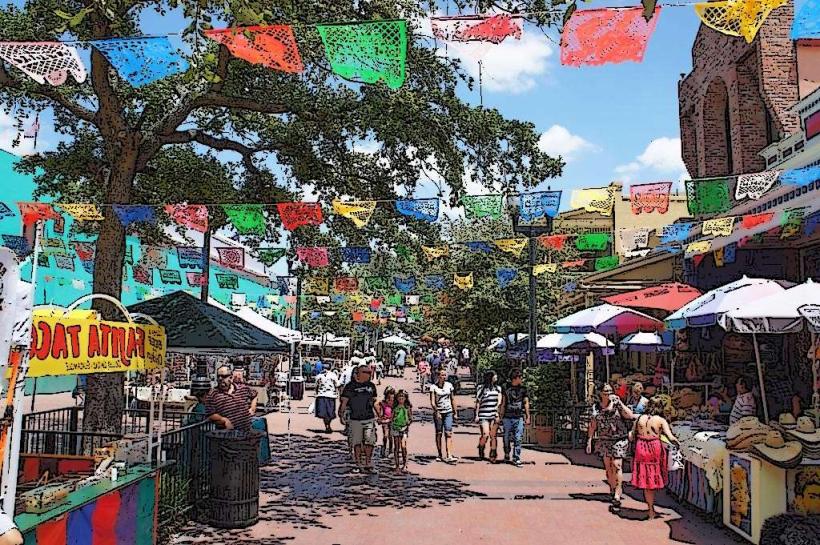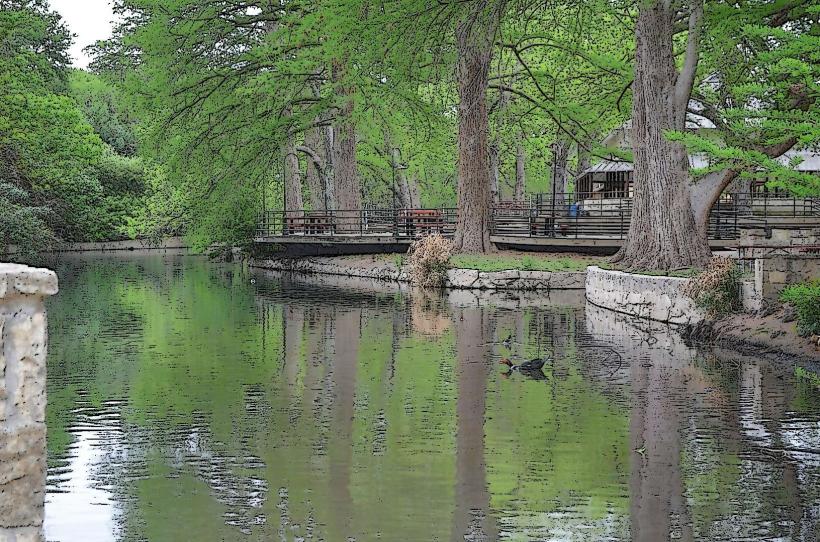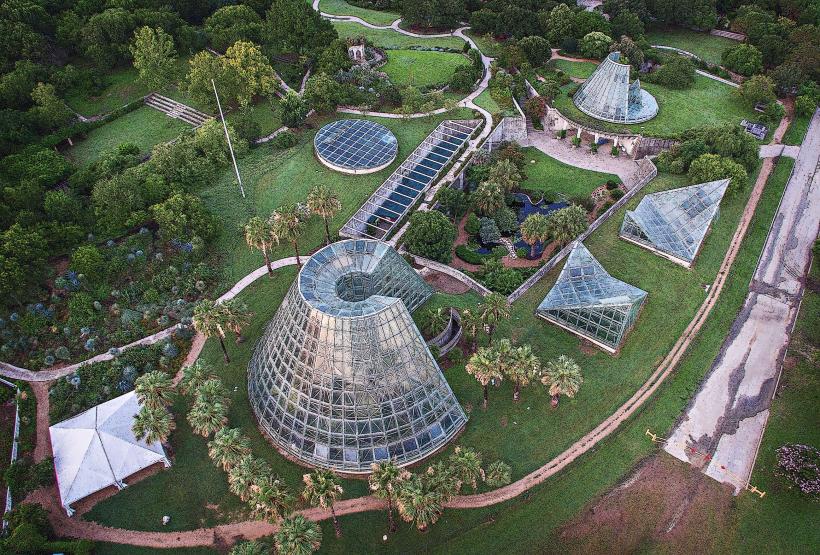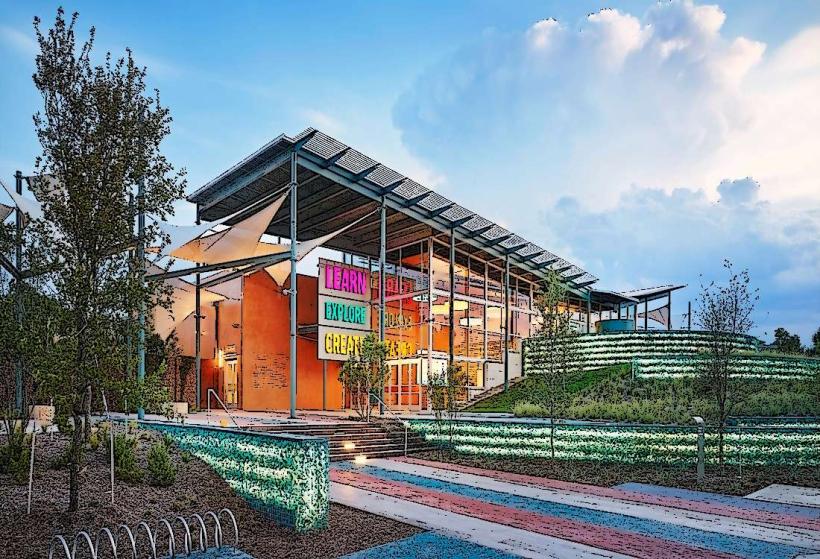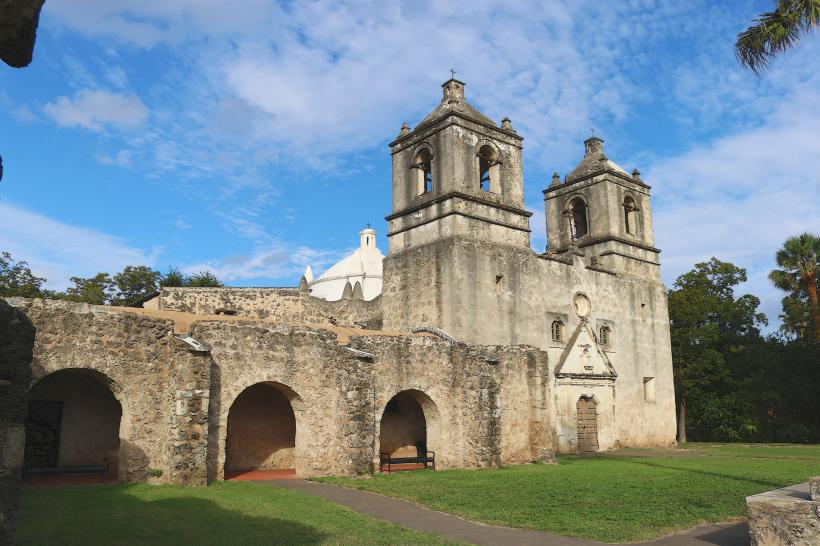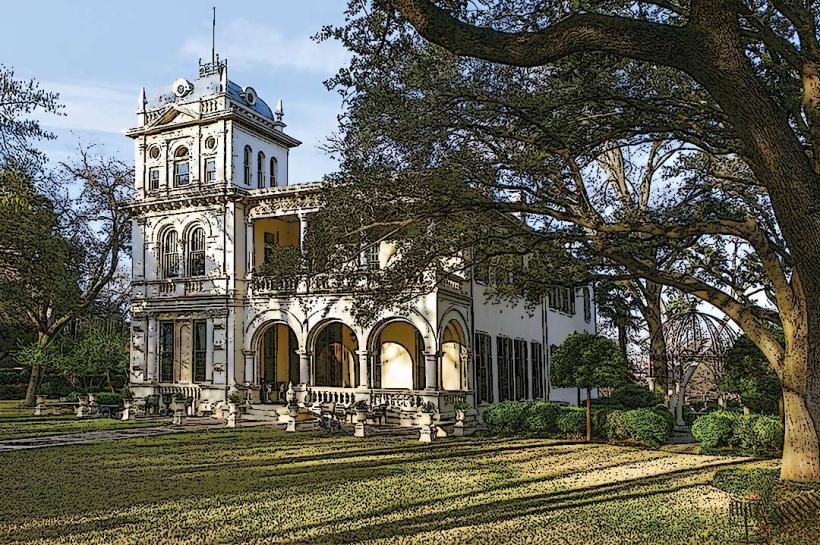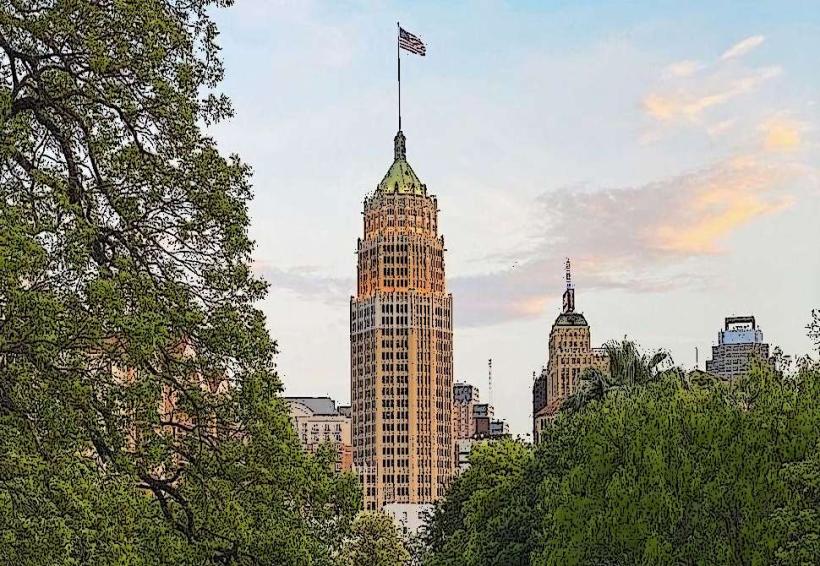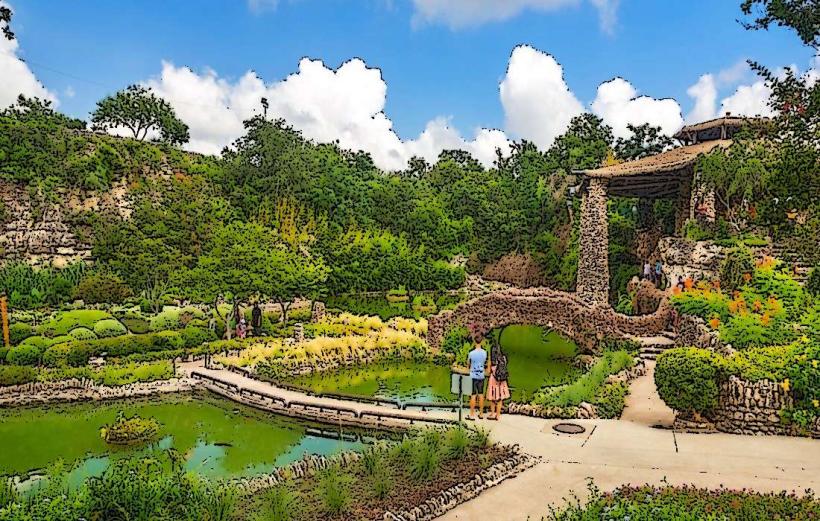Information
Landmark: San Fernando CathedralCity: San Antonio
Country: USA Texas
Continent: North America
San Fernando Cathedral, San Antonio, USA Texas, North America
The San Fernando Cathedral, located in downtown San Antonio, Texas, is one of the oldest active cathedrals in the United States and a significant historical and cultural landmark. Its rich history, stunning architecture, and central role in the religious and cultural life of the city make it a key point of interest for visitors and locals alike. Here's a detailed look at the San Fernando Cathedral:
1. History and Origins
Foundation and Early Years: The San Fernando Cathedral was founded in 1731 by Spanish settlers, making it one of the oldest continuously operating churches in the U.S. It was originally established as a parish for Spanish settlers in the region, who had come to the area as part of Spain’s colonial efforts. The cathedral was built to serve the needs of these settlers and later became the spiritual center for the growing population of San Antonio.
Mission San Fernando: The original mission was part of the larger Spanish effort to establish a network of religious missions across Texas, though the San Fernando Mission itself was eventually secularized in the late 18th century. Despite this, the church remained an important part of the community and was restructured as a parish.
Construction: The construction of the church began in 1738, and its early design was typical of Spanish colonial architecture. It was completed over several decades, with key features, such as its stone walls, large arches, and vaulted ceilings, built to reflect the Spanish Baroque style.
Restorations and Additions: Throughout the 19th and 20th centuries, the cathedral underwent several restorations and expansions, including the addition of a grand facade, new stained glass windows, and a bell tower. These updates helped preserve the cathedral’s historical integrity while enhancing its architectural beauty.
2. Architectural Features
Spanish Colonial and Gothic Revival Style: The San Fernando Cathedral is primarily designed in the Spanish Colonial style, characterized by simple, elegant, and functional elements. The church's stone exterior, arched doorways, and baroque detailing reflect the early Spanish influence in the region. Later additions, particularly during the 19th century, incorporated elements of Gothic Revival architecture.
The Bell Tower: One of the most distinctive features of the cathedral is its bell tower, which stands prominently above the surrounding buildings. The bell tower houses a set of bells that have been used for centuries, calling the community to prayer and marking important events. The bells themselves have an important place in San Antonio’s history.
Interior Design: Inside the San Fernando Cathedral, visitors are greeted with an expansive, open nave adorned with beautiful stained glass windows that depict religious scenes. The altar is ornate, and the space is richly decorated with intricate woodwork, detailed carvings, and religious statues. The cathedral's interior is designed to inspire awe and reflection, with its high vaulted ceilings and serene atmosphere.
Shrine to the Heroes of the Alamo: The cathedral is also home to a small shrine dedicated to the defenders of the Alamo, including figures like James Bowie, William B. Travis, and Davy Crockett. The shrine features plaques with their names and serves as a place of remembrance for the men who sacrificed their lives at the Alamo.
3. Religious Significance
Catholic Headquarters: San Fernando Cathedral serves as the seat of the Archdiocese of San Antonio and is an important center for Catholic worship and community life. It holds regular Masses, as well as special services for holidays, baptisms, weddings, and funerals. The cathedral's clergy and congregation play a significant role in maintaining the religious and spiritual life of the city.
Sacraments and Events: The cathedral offers all the sacraments of the Catholic Church, including Eucharist, baptism, marriage, and reconciliation. It is also the site for major religious events, such as the celebration of Easter, Christmas, and special feast days. These religious services often draw large crowds, particularly during holidays, and reflect the deep faith of the local Catholic community.
4. Cultural and Historical Importance
The Alamo Connection: As one of the oldest and most important structures in San Antonio, the San Fernando Cathedral is intimately tied to the history of the city. It stands near the Alamo, which further emphasizes its connection to Texas’ fight for independence. The cathedral has witnessed countless historical events, from the early colonial era through the Texas Revolution and beyond.
San Antonio’s Spiritual Center: The cathedral is not only a religious site but also a cultural and historical symbol for the city. It has served as the backdrop for key moments in San Antonio’s history, from its establishment during Spanish colonial times to its role in Texas’ independence. It is a reflection of the city’s deep-rooted Catholic heritage and its role as a meeting place for people of different backgrounds and beliefs.
The Tomb of the Alamo Heroes: The cathedral is the final resting place for several of the men who died during the Battle of the Alamo. The most famous of these are the remains of those who defended the Alamo and whose graves were marked in the cathedral’s chapel. This connection to the Alamo gives the cathedral even greater historical and emotional significance for many visitors.
5. Art and Iconography
Stained Glass Windows: The San Fernando Cathedral is renowned for its beautiful stained glass windows, which depict scenes from the life of Christ, the Virgin Mary, and various saints. These windows add to the spiritual atmosphere of the cathedral, creating a colorful and reflective environment for prayer and worship.
The Mural of the Last Supper: A prominent mural inside the cathedral depicts the Last Supper, one of the most significant moments in Christian tradition. This work of art, along with the other religious artworks in the cathedral, serves as a reminder of the sacredness of the space and the history of the Catholic faith.
Religious Statues and Iconography: Scattered throughout the cathedral are statues of saints and religious figures, as well as various religious icons that enhance the church’s beauty and spiritual significance. These statues serve as focal points for prayer and meditation and are integral to the devotional life of the church.
6. San Fernando Cathedral as a Venue for Events
In addition to its role as a place of worship, San Fernando Cathedral is also used for various community events and celebrations, such as concerts, lectures, and cultural performances. The cathedral hosts occasional musical performances, including classical concerts and choral events, further solidifying its place as an important cultural venue in San Antonio.
Light Show: One of the most recent additions to the San Fernando Cathedral experience is a nightly light show that highlights the history of San Antonio. The show, titled "San Antonio | The Saga," uses projection mapping technology to tell the story of the city, from its founding to the present day. This vibrant display is projected onto the cathedral’s façade and attracts large audiences every evening.
7. Visitor Experience
Accessibility and Tours: The San Fernando Cathedral is open to the public, and visitors are welcome to attend Mass, explore the interior, or simply admire the architectural beauty of the building. The cathedral offers informational brochures and has staff available to provide insight into its history and significance. Guided tours are also available for those interested in learning more about the cathedral’s heritage.
Location: The cathedral is located in the heart of San Antonio, within walking distance of other historical landmarks, including the Alamo and the River Walk. Its central location makes it a convenient stop for tourists and an essential part of any visit to the city.
Conclusion
The San Fernando Cathedral is much more than just a place of worship. It is a symbol of San Antonio’s deep historical roots, religious heritage, and cultural identity. From its Spanish colonial origins to its modern-day role as a vibrant center of faith and culture, the cathedral continues to play an important part in the spiritual and social life of the city. Its stunning architecture, rich history, and spiritual significance make it one of San Antonio’s most beloved landmarks.

